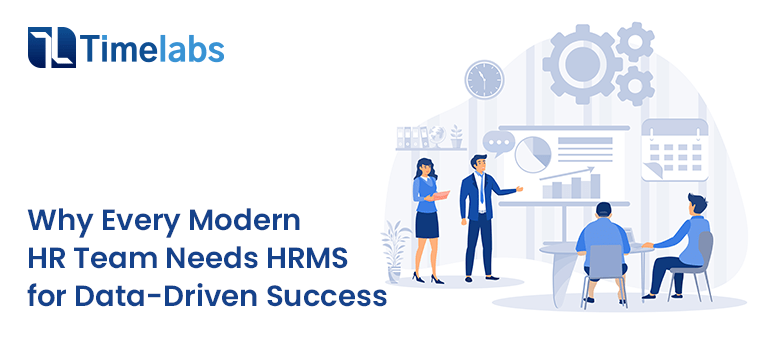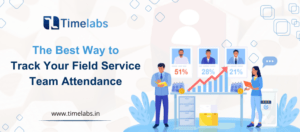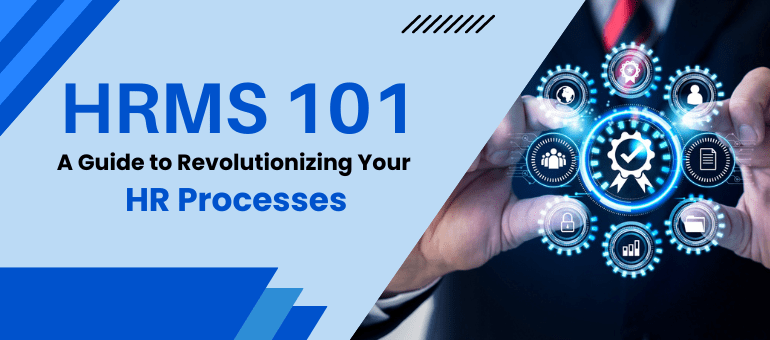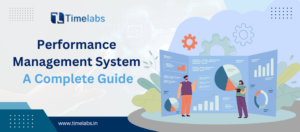Human resource management has evolved from manual processes to a strategic function that drives organizational success. The adoption of modern HR software enables HR teams to streamline operations, enhance decision-making, and align workforce strategies with business goals. This article outlines the critical role of a Human Resource Management System (HRMS) in enabling data-driven success, with a focus on practical applications, operational benefits, and how solutions like those offered by Timelabs empower organizations to optimize HR processes.
The Shift to Strategic HR Management
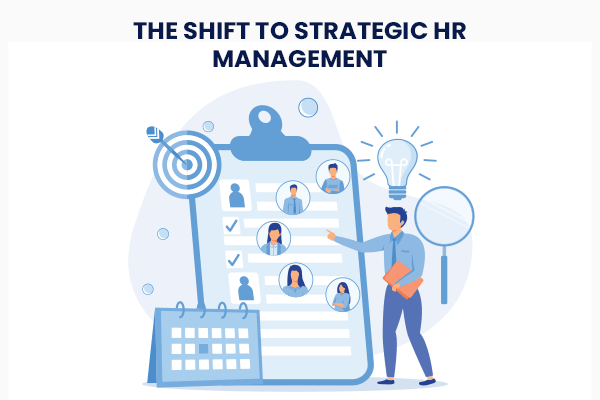
The role of HR has transformed significantly over the past decade. No longer confined to administrative tasks like payroll and attendance tracking, HR professionals are now expected to contribute to strategic objectives such as talent retention, workforce planning, and organizational growth. A HRMS provides a centralized platform to manage employee data, automate repetitive tasks, and generate actionable insights, allowing HR teams to focus on high-impact initiatives.
By consolidating disparate systems into a single solution, an HRMS eliminates inefficiencies caused by fragmented data. For example, instead of toggling between spreadsheets for employee records and separate tools for recruitment, an HRMS integrates these functions, ensuring real-time access to accurate information. This unified approach enhances collaboration across departments and supports strategic alignment with business objectives.
Streamlining Recruitment and Talent Acquisition
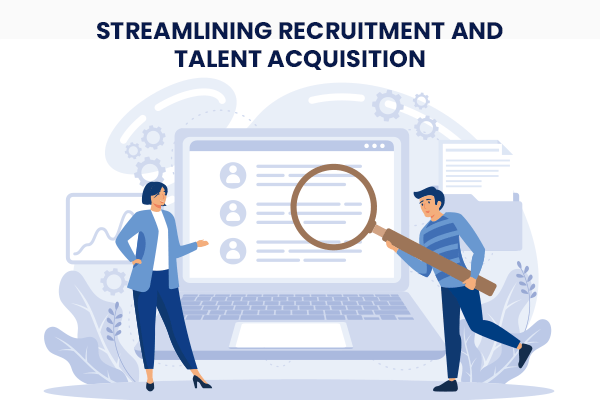
Recruitment is a critical HR function that directly impacts organizational performance. Data driven HR decisions play a pivotal role in optimizing the hiring process. An HRMS automates candidate sourcing, screening, and onboarding, reducing time-to-hire and improving the quality of hires. For instance, Timelabs offers a Smart Candidate Rating feature that uses algorithms to evaluate applicants based on predefined criteria, enabling HR teams to prioritize top talent efficiently.
Key benefits of using an HRMS for recruitment include:
- Automated Screening: Filters candidates based on skills, experience, and qualifications, reducing manual effort.
- Improved Candidate Experience: Streamlines communication and provides self-service portals for applicants to track their progress.
- Cost Efficiency: Minimizes resource allocation by focusing on high-potential candidates.
These capabilities ensure that HR teams can attract and retain top talent while aligning hiring strategies with organizational needs.
Enhancing Employee Data Management
Effective employee data management is the backbone of any HR operation. A HRMS centralizes employee information, including demographics, performance records, and compensation details, into a single, secure platform. This eliminates data silos and ensures that HR professionals have access to accurate, up-to-date information for decision-making.
For example, Timelabs’ HRMS solutions provide user-friendly interfaces and mobile apps that allow employees to update personal details, request time off, or access pay stubs independently. This self-service functionality reduces administrative workload and fosters transparency, boosting employee engagement. Additionally, centralized data management ensures compliance with labor laws by maintaining accurate records for audits and regulatory reporting.
Driving Compliance and Reducing Risk
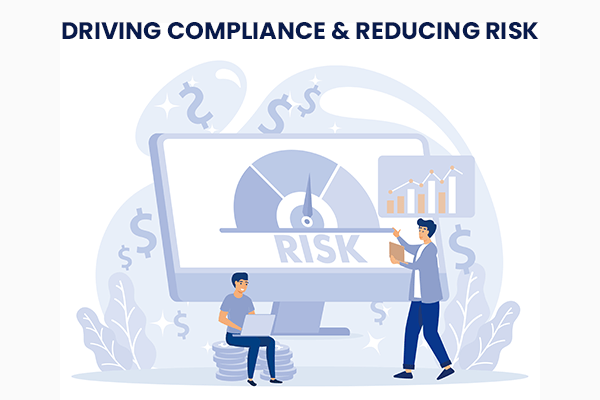
Compliance with labor regulations and industry standards is a non-negotiable aspect of HR management. Modern HR software simplifies compliance by embedding rules and guidelines into the system. Automated workflows ensure that HR processes adhere to state, federal, or industry-specific requirements, reducing the risk of penalties or legal issues.
For instance, an HRMS can generate reports for audits, track employee certifications, and ensure adherence to payroll tax regulations. By automating these tasks, HR teams can focus on strategic initiatives rather than manual compliance checks. This is particularly valuable for organizations operating in multiple regions with varying legal requirements.
Leveraging HR Analytics for Strategic Insights
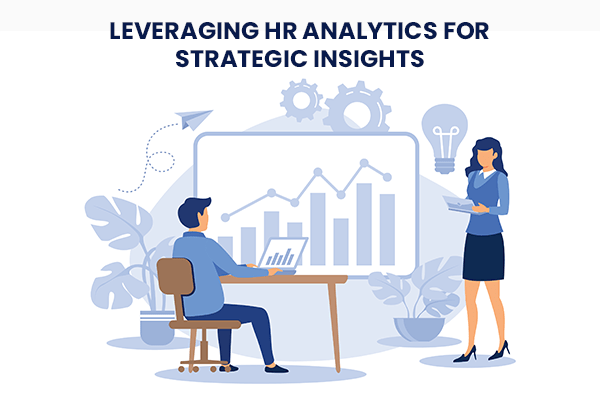
The ability to make data driven HR decisions is a game-changer for modern HR teams. HR analytics transforms raw employee data into actionable insights, enabling HR professionals to identify trends, predict workforce needs, and optimize talent management strategies. For example, analyzing historical data on employee turnover can reveal patterns that inform retention initiatives.
An HRMS with robust analytics capabilities offers:
- Descriptive Analytics: Examines historical data to understand past trends, such as annual leave patterns or turnover rates.
- Diagnostic Analytics: Identifies the causes of specific outcomes, such as factors contributing to absenteeism.
- Predictive Analytics: Uses statistical models to forecast future workforce trends, such as identifying employees with high leadership potential.
By leveraging these analytics, HR teams can align their strategies with business goals, improve employee engagement, and enhance overall organizational performance.
Automating Repetitive Tasks for Efficiency
Automation is a cornerstone of modern HR software, enabling HR teams to eliminate time-consuming manual processes. Tasks such as payroll processing, attendance tracking, and leave management can be automated within an HRMS, freeing up time for strategic work. For example, Timelabs’ AI Facial Recognition Module enhances attendance tracking by eliminating errors like buddy punching, ensuring accurate records.
Automation also improves consistency and reduces human error. Automated payroll systems calculate salaries, deductions, and taxes accurately, while automated onboarding workflows ensure new hires receive consistent training and orientation. These efficiencies translate into cost savings and improved employee satisfaction.
Supporting a Data-Driven HR Culture
Building a culture that prioritizes data driven HR decisions requires more than just technology; it demands leadership buy-in and employee engagement. An HRMS facilitates this by providing tools to share insights with stakeholders and involve employees in data-driven processes. For instance, dashboards and visual reports make it easy to communicate key metrics to executives, securing their support for HR initiatives.
Employees also benefit from a data-driven approach. Self-service portals allow them to access performance feedback, training resources, and career development plans, fostering a sense of ownership. By integrating these tools, an HRMS empowers organizations to create a culture where data informs decisions at every level.
Optimizing Talent Management with HR Analytics
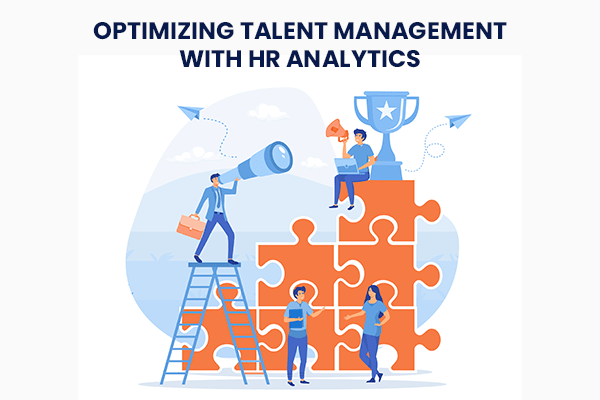
HR analytics is not just about reporting; it’s about transforming HR into a strategic partner. By analyzing data on employee performance, skills, and engagement, an HRMS helps identify high-potential employees for leadership roles or pinpoint skill gaps for targeted training programs. This proactive approach to talent management ensures that organizations are prepared for future challenges.
For example, predictive analytics can forecast which employees are at risk of leaving, allowing HR teams to implement retention strategies before turnover occurs. Similarly, analytics can optimize succession planning by identifying candidates with the right skills and potential to fill critical roles.
Improving Employee Engagement and Retention
Employee engagement is a key driver of organizational success, and modern HR software plays a critical role in fostering it. An HRMS provides tools to track engagement metrics, such as survey responses or absenteeism rates, and identify factors affecting morale. By addressing these factors proactively, HR teams can improve workplace culture and reduce turnover.
Self-service features within an HRMS also enhance engagement by giving employees control over their HR-related tasks. For instance, mobile apps allow remote workers to mark attendance or access training materials, creating a seamless experience that supports hybrid work environments.
Must Read: How to Manage Payroll Efficiently During Business Expansion
The Competitive Advantage of HRMS Adoption
Adopting an HRMS gives organizations a competitive edge by aligning HR processes with business objectives. By automating routine tasks, centralizing data, and leveraging HR analytics, HR teams can focus on strategic initiatives that drive growth. Solutions like those from Timelabs provide scalable, customizable platforms that cater to businesses of all sizes, ensuring flexibility and efficiency.
Organizations that embrace an HRMS are better positioned to attract top talent, retain high-performing employees, and adapt to changing market demands. The ability to make data driven HR decisions ensures that HR strategies are not based on intuition but on evidence that drives measurable outcomes.
FAQs
Q1. What is the primary function of an HRMS?
Ans: An HRMS centralizes HR functions like recruitment, payroll, and employee data management, automating tasks and providing data-driven insights to optimize workforce strategies.
Q2. How does HR analytics improve decision-making?
Ans: HR analytics uses historical and predictive data to identify trends, assess performance, and forecast workforce needs, enabling informed decisions that align with business goals.
Q3. Can an HRMS support remote work environments?
Ans: Yes, an HRMS offers mobile-friendly self-service portals and AI-driven features like facial recognition for attendance, making it ideal for managing remote or hybrid teams.
Q4. How does an HRMS ensure compliance?
Ans: An HRMS embeds compliance rules, automates reporting, and maintains accurate records, helping organizations meet legal and regulatory requirements efficiently.
Q5. What makes Timelabs’ HRMS unique?
Ans: Timelabs offers advanced features like Smart Candidate Rating and AI Facial Recognition, providing scalable solutions for recruitment, attendance, and analytics.
